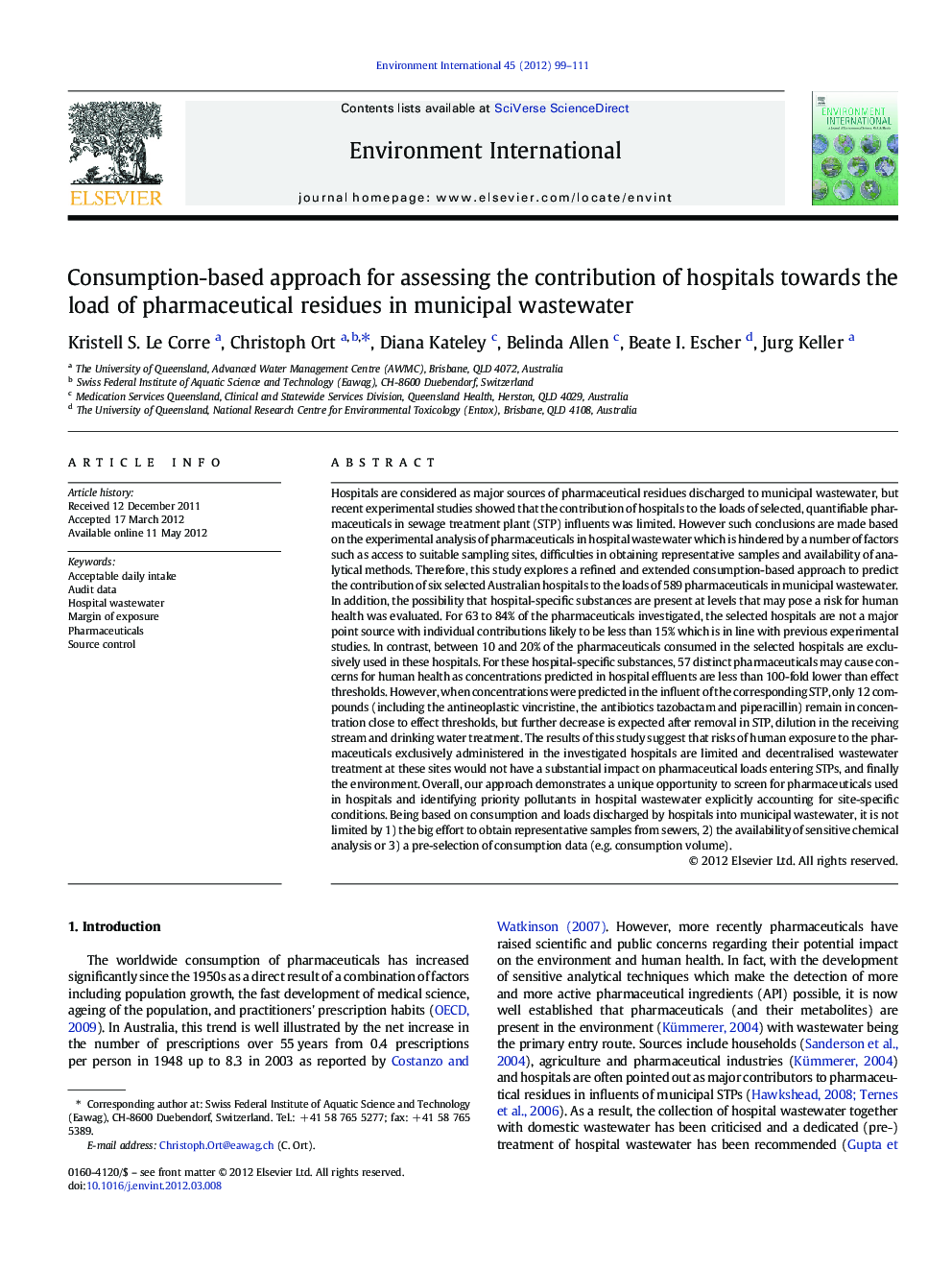| کد مقاله | کد نشریه | سال انتشار | مقاله انگلیسی | نسخه تمام متن |
|---|---|---|---|---|
| 4423048 | 1619082 | 2012 | 13 صفحه PDF | دانلود رایگان |

Hospitals are considered as major sources of pharmaceutical residues discharged to municipal wastewater, but recent experimental studies showed that the contribution of hospitals to the loads of selected, quantifiable pharmaceuticals in sewage treatment plant (STP) influents was limited. However such conclusions are made based on the experimental analysis of pharmaceuticals in hospital wastewater which is hindered by a number of factors such as access to suitable sampling sites, difficulties in obtaining representative samples and availability of analytical methods. Therefore, this study explores a refined and extended consumption-based approach to predict the contribution of six selected Australian hospitals to the loads of 589 pharmaceuticals in municipal wastewater. In addition, the possibility that hospital-specific substances are present at levels that may pose a risk for human health was evaluated. For 63 to 84% of the pharmaceuticals investigated, the selected hospitals are not a major point source with individual contributions likely to be less than 15% which is in line with previous experimental studies. In contrast, between 10 and 20% of the pharmaceuticals consumed in the selected hospitals are exclusively used in these hospitals. For these hospital-specific substances, 57 distinct pharmaceuticals may cause concerns for human health as concentrations predicted in hospital effluents are less than 100-fold lower than effect thresholds. However, when concentrations were predicted in the influent of the corresponding STP, only 12 compounds (including the antineoplastic vincristine, the antibiotics tazobactam and piperacillin) remain in concentration close to effect thresholds, but further decrease is expected after removal in STP, dilution in the receiving stream and drinking water treatment. The results of this study suggest that risks of human exposure to the pharmaceuticals exclusively administered in the investigated hospitals are limited and decentralised wastewater treatment at these sites would not have a substantial impact on pharmaceutical loads entering STPs, and finally the environment. Overall, our approach demonstrates a unique opportunity to screen for pharmaceuticals used in hospitals and identifying priority pollutants in hospital wastewater explicitly accounting for site-specific conditions. Being based on consumption and loads discharged by hospitals into municipal wastewater, it is not limited by 1) the big effort to obtain representative samples from sewers, 2) the availability of sensitive chemical analysis or 3) a pre-selection of consumption data (e.g. consumption volume).
► Predicting hospitals' contribution to the loads of medicines in municipal wastewater.
► Assessing risks of human exposure to hospital-specific pharmaceuticals.
► The impact of hospitals on pharmaceutical pollution in municipal wastewater is limited.
► Levels of hospital-specific medicines in STPs effluents are unlikely to pose a risk for human health.
► A transferable tool for the prioritisation of pharmaceuticals used in hospitals.
Journal: Environment International - Volume 45, 15 September 2012, Pages 99–111